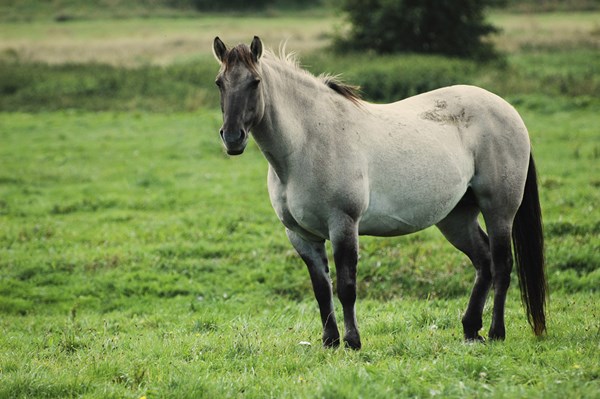 Credit: Thinkstock
Credit: ThinkstockPathogenic leptospires are zoonotic, spirochete bacteria. They have a world-wide distribution, and they can infect a wide variety of species. Leptospires are most commonly maintained in the urinary tract of small mammals and are transmitted through contact with the urine. Although exposure to leptospires is generally through small mammals, affected horses can also shed bacteria in their urine and be a source of infection. In horses, abortion is the most economically significant manifestation.
Infection of pregnant mares with pathogenic leptospires can result in abortion, stillbirth, birth of live, non-viable foals and, rarely, viable foals. Live but non-viable foals are often born significantly premature. Foals that survive intrauterine infection are generally weak at birth, but can recover through intensive supportive care. From July 1, 2011, through May 28, 2014, 57 cases were recorded at the University of Kentucky Veterinary Diagnostic Laboratory; 50 abortions (88%), four live but non-viable foals (7%), and three viable foals (5%). The 54 abortions and live but non-viable foal data are represented in Figure 1, in addition to previously reported data.* A foaling season spans July 1 to June 30, i.e., the 2013 foaling season ended June 30, 2013.
Diagnosis of leptospirosis from the fetus and placenta is rarely complicated; however, identification of infected pregnant mares can be difficult. Unlike many other bacterial causes of abortion, mares that abort due to leptospirosis rarely show premonitory signs. Surveillance of mares using serologic testing is often performed in the fall. However, the significance of positive findings can be complicated because many uninfected mares are seropositive for Leptospira spp. A polymerase chain reaction assay on urine can identify animals that are shedding leptospires, and these animals can be managed to reduce the risk of exposure of other horses, humans and animals.

The incidence of reproductive leptospirosis can vary widely by year (see Figure 2). There is anecdotal evidence that this variation is associated with wet weather in the fall. However, it is important that surveillance should not be eased due to weather patterns. Leptospirosis generally occurs sporadically, although farms can occasionally experience multiple cases of reproductive leptospirosis within one foaling season.
*http://www2.ca.uky.edu/gluck/q_apr11.asp#lepto
This article was written for the University of Kentucky Gluck Equine Research Center’s Equine Disease Quarterly by Dr. Laura Kennedy. The Equine Disease Quarterly is funded by underwriters at Lloyd’s London brokers and their Kentucky agents.


